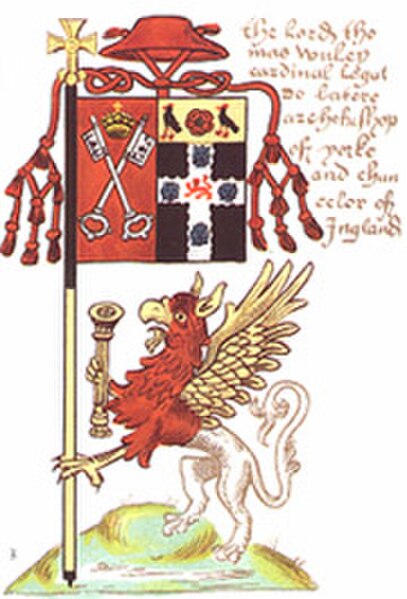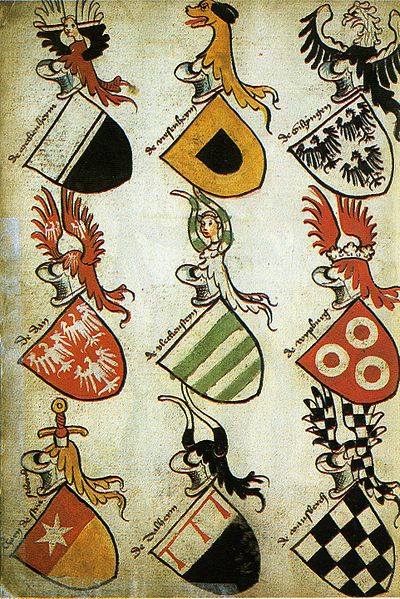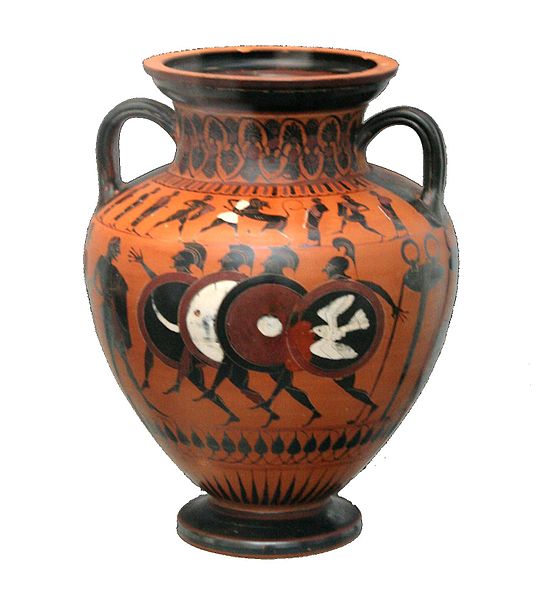Impalement is a heraldic practice in which two coats of arms are combined in one shield to denote a union. The impaled shield is bisected in pale, that is by a vertical line, with each half of the shield displaying one coat of arms. Most often the practice is used to denote the union of a husband and wife in marriage, but impalement is also used to display unions with an ecclesiastical office, academic position, government office, or mystical union.
Memorial stone in Kilkenny, Ireland, depicting the family arms separated, and then impaled together on top.
Banner of Cardinal Wolsey as Archbishop of York. His personal arms in sinister (to viewer's right) are impaled with the arms of the See of York in dexter (to viewer's left), the position of honour.
Arms of Sir Arthur Northcote, 2nd Baronet (1628–1688), detail from ledger stone, King's Nympton Church, Devon, England
Image: Sir Peter Courtenay Brass Escutcheon Exeter
Heraldry is a discipline relating to the design, display and study of armorial bearings, as well as related disciplines, such as vexillology, together with the study of ceremony, rank and pedigree. Armory, the best-known branch of heraldry, concerns the design and transmission of the heraldic achievement. The achievement, or armorial bearings usually includes a coat of arms on a shield, helmet and crest, together with any accompanying devices, such as supporters, badges, heraldic banners and mottoes.
The German Hyghalmen Roll was made in the late 15th century and illustrates the German practice of repeating themes from the arms in the crest. (See Roll of arms).
Reverse of the Narmer Palette, circa 3100 BC. The top row depicts four men carrying standards. Directly above them is a serekh containing the name of the king, Narmer.
Fresco depicting a shield of a type common in Mycenaean Greece.
Vase with Greek soldiers in armor, circa 550 BC.








